
20 minute read
Window and Facade Magazine - 5th Anniversary edition


Advertisement
Anniversary Edition
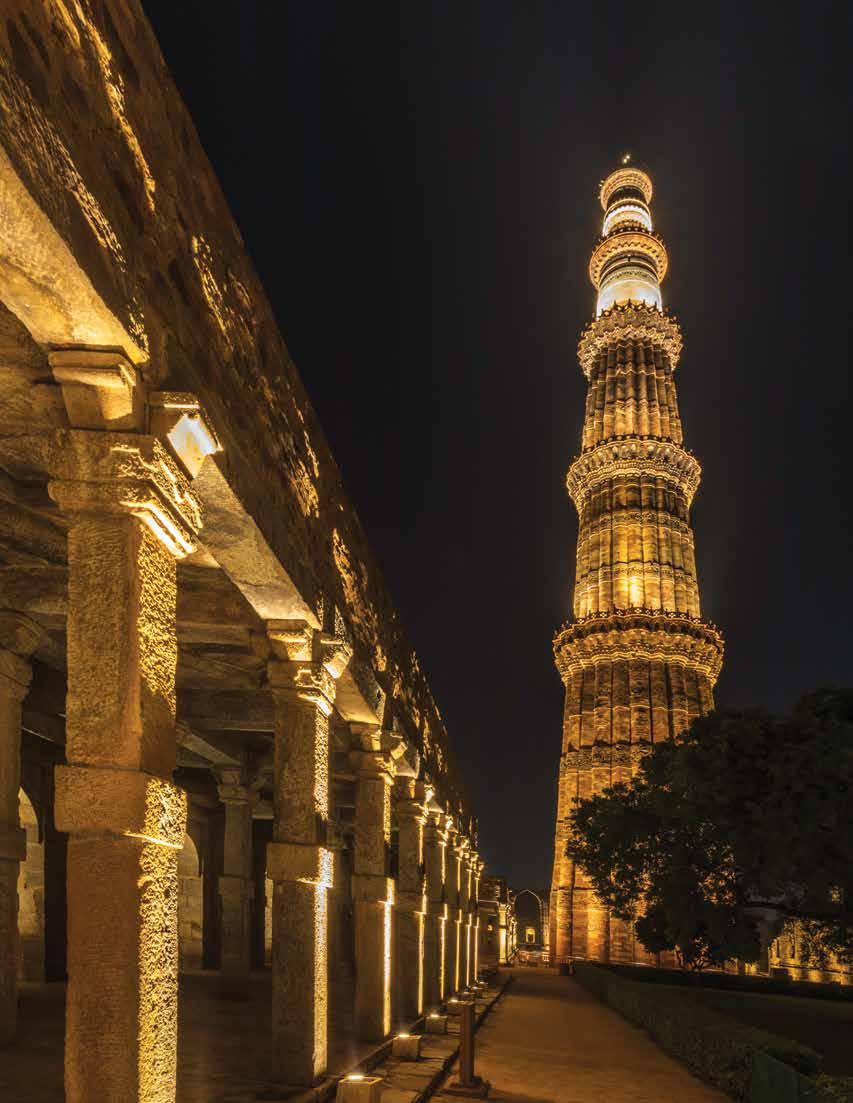
FAÇADE LIGHTING Creating Distinct Landmarks
CONTENTS 54 20

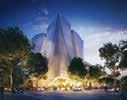
Volume 5 | Issue 6 July - August 2019
PUBLISHED BY F & F Media and Publications C-55, Okhla Industrial Area, Phase - 1, New Delhi-110 020 T: +91-11-40623356 CO-FOUNDERS Syed Ahad Ahmed Amit Malhotra TECHNICAL PANEL Mahesh Arumugam Director Meinhardt Façade Consultants KR Suresh Regional Director Axis Façade Consulting EDITORIAL Renu Rajaram renu@wfm.co.in +91 9312864830 Shefali Bisht shefali@wfm.co.in DESIGN & CONCEPT BY Prashant Kumar MARKETING & OPERATIONS Kapil Girotra kapil@wfm.co.in +91 9560925255 SUBSCRIPTION & CIRCULATION Richa Parmar support@wfm.co.in +91 9871151112 Mukesh Kumar mukesh@wfm.co.in +91 9560088995
46

92
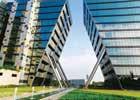
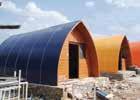
103
10
14
20
27
33
40
46
54
92
103
113
124
Façade and Light Sakshi Jindal, Head of Sustainability – India, HKS India Design Consulting Pvt. Ltd. Façades for Light Sanjeev Nangia, Founding Partner & Principal Director, Design Matrix Adding Value to Façade Efficiency & Aesthetics Abdul Moeed Chaudhary, Sr. Engineer in Consulting Team (Mumbai), Conserve Consultants Pvt. Ltd. Architecture in the Light of the ‘Dark’ Ar. Surbhi Jindal, Founder & Lighting Design Head, DaLightHub Lighting Design & Consultancy, Mumbai Responsive, Communicative & Adaptive Façade Lighting Indrajit Kembhavi, Principal Architect & Partner, Kembhavi Architects Digital Technology & Media Façades Radeesh Shetty, Founder & Director, The Purple Turtles
Media Facades - Buildings that Broadcast Ar. Ashish Bahal, Lead Architect + Experience Designer, Faculty, Philips Lighting Academy, Signify Innovations Pvt Ltd Cover Story Façade Lighting: Creating Distinct Landmarks Face to Face Interview with Ar. N. Mahesh, Principal Architect, Iyer & Mahesh
Industry Speaks Interview with Nikhil Arora, Director, Virgo Group of Companies Post Event Report Zak World of Windows, August 2nd 2019, Novotel, Visakhapatnam
Project Watch Windows A Dialogue by STUDIO 9491
RNI: DELENG/2014/57870
Cover Courtesy: Signify Innovations Pvt Ltd
DISCLAIMER: With regret we wish to say that publishers cannot be held responsible or liable for error or omission contained in this publication. The opinions and views contained in this publication are not necessarily those of the publishers. Readers are advised to seek expert advice before acting on any information contained in this publication which are very generic in nature. The Magazine does not accept responsibility for the accuracy of claims made by advertisers. The ownership of trademarks is acknowledged. No part of this publication or any part of the contents thereof may be reproduced in any form or context without the permission of publishers in writing.
WRITE TO THE EDITOR Please address your suggestions to: The Editor, Window & Façade Magazine, C55, Okhla Industrial Area, Phase – 1, New Delhi, 110020 or email renu@wfm.co.in. Please provide your full name and address, stating clearly if you do not wish us to print them. Alternatively log on to www. wfm.co.in and air your views. The opinions expressed in this section are of particular individuals and are in no way a reflection of the publisher’s views.
Façade and Light
Light has always played an important role in building design and construction. A building cannot be functional without access to light. Lighting design is mainly characterised in two categories, natural and artificial lighting. Both lighting possibilities have an acute effect on indoors and outdoors during different times of a day through the fenestration of the building. The effect is defined in terms of views exchange, impact on the environment, the health of occupants, etc. There are various tools such as Grasshopper in Rhino, IES, Sefaira, etc. that help to understand these effects before the actual construction of the building. Therefore, a building's façade design plays a very important role in the indooroutdoor relationship of lighting.
DAYTIME The key to façade design is the relation between the outside sunlight and its interaction with façade to allow the daylight to enter inside the building to facilitate various functions. Not only does this make the building more energy-efficient, but it is also healthy for the occupants of the building. As per various research, daylight is known for regulating our circadian rhythm
and keeping our mental health in check. The exposure to light has a direct relation with the impact on the eyes as well. Therefore, an appropriate amount of daylighting should be incorporated during façade design which meets the melanopic lux level requirement (200 melanopic lux). Lux levels are always calculated at 1.2m from the finished floor facing the vertical plane being measured. The interior space should be checked to meet all the light temperature and colour rendering index while designing the façade and installing the light. The design of optimal façade with the incorporation of daylight entering the building, not only regulates the body-clock of occupants and decreases the energy requirement but also gives access to outdoor views to the occupants and increases their productivity.
NIGHT-TIME Interaction of indoor to outdoor lighting is not just restricted to daytime but has a major significance during night-time as well. During the night, the indoor light is scattered outside around the building, creating a light halo around a building through its fenestrations. This tends to create glare and light trespassing. This type of light is called the waste
light, it does not contribute towards night-time safety, utility or security, but consumes energy and disturbs the flora and fauna. The lighting requirement and directions should meet the outdoor lighting zone requirements to avoid light pollution during the night. This can be done by meeting the required consideration during the design of the façade and choice of lights. Choice of lights include the design of luminaire, intensity, colour temperature, colour rendering index for all indoor space, outdoor space and façade itself. Various types of light filtering glasses can be used to prevent the disturbance in the path of migrating birds and the growth of plants.
Technology is moving at a very high speed and kinetic façade (dynamic façade) is making it easier to achieve the day-time and night-time lighting requirements without compromising on aesthetics and energy-efficiency. The support of tools such as Ladybug, Diva, Honeybee with Arduino helps in the overall optimal design of façade at an early design stage. A building façade is treated and tested properly at the design stage to meet the predicted EUI (Energy Use Intensity) of the project and make it healthy for occupants at the same time.
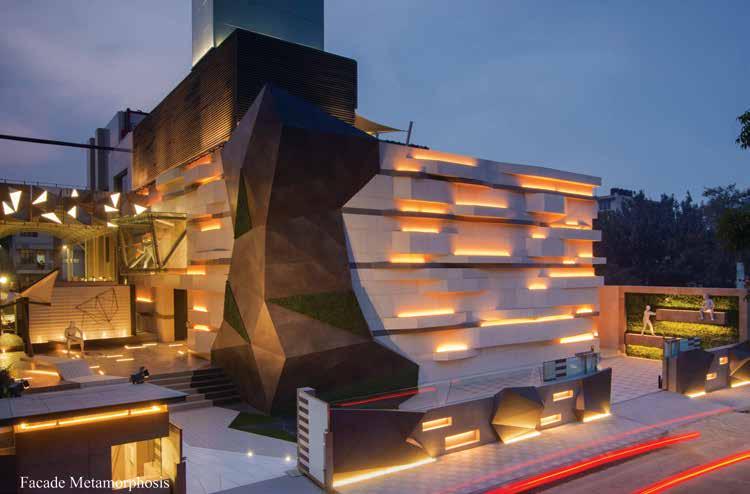
Intersekt, New Delhi, India
Façad
The night-time economy is increasingly being seen as revitalisers of a city’s economic and tourism growth. This has led to the setting up of ‘night czars’ – or city planning councils to promote nightlife in urban centers, together making a strong case for extending a building’s iconicity after dark. And while it serves no other functional purposes, façade lighting does serve as an extremely useful marketing tool that seeks to engage with the public even after the facility is closed. Just as cardinal orientation (of glazing) is crucial to the designing of lighting
in interior spaces and how much to limit or intensify the amount of artificial lighting, the orientation of building to views and angles of view is crucial to the design of the façade lighting. It not only dictates how to maximise on and address prominent views - which elements to emphasise and which to neglect, but how a luminaire must be positioned to avoid glare and light trespass, how a detail must be integrated to avoid seeing the light source yet see the effect of light. Key location plans usually serve as valuable inputs to the façade lighting design indicating the direction of vehicular movement,
for Light es
adjoining high-speed vehicular arteries and neighbourhood streets, and the urban context.
In the following section, we describe the façade lighting – design, process and outcome for two very distinct projects, but are unified in their approach towards lighting. For Intersekt and for the Neelkanth Sarovar Premiere – with two radically different façade designs, in two places thousands of kilometers apart from each other, in two very different cultural and urban contexts, they stand testimony to our belief that the language of light knows no boundaries!
Adding Value to Façade Efficiency & Aesthetics
Building façade is one of the most vital pieces of design, which refers to the side, normally the front side of a building structure. It provides a great opportunity for designers and architects to play around and display their design skills and artistic talent. But a façade is more than just for show to the public.
The design of façades is highly complex, at the same
time extremely important in determining the success of a building. The façade does not only integrate with architectural context, but also play a key role in the building performance. In theory, a façade designer has to strike a balance between visual and thermal performance of the façade, which plays an important role in energy consumption and thermal comfort of the occupants inside the building.
Façades are not only designed for their aesthetic reasons, but there are also several factors that need consideration such as types of materials and their durability, ease of installation and maintenance, cost factor, resistance to corrosion and other chemicals are some of the common considerations that goes into an effective façade design and implementation. That being said, the important aspect of the façade is that it adds value to

Architecture in the Light of the ‘DARK’
Acouple of weeks ago, from my visit to the world’s most romantic city - Paris, witnessing the stunning show of light and colour, I was awestruck by the Saint Chapelle’s beauty, its radiant light, striking colours and juxtaposition of natural light on the stained glass windows. It is one of the finest examples of an architectural marvel clothed in daylight bringing a sense of peace and serenity.
Light provides both intellectual as well as physical form to our world. As an architect, I have been unable to ignore these rather obvious conditions. Physical movement combined with a relationship to light promotes our well-being - both physical and intellectual. Natural light not only plays on the comfort, health and mood of man, in architecture, but this is also an integral part of the design of a building, bringing an added value.
However, in a 24-hour day, it is difficult to meet all the lighting
needs of a building, which is why artificial light is used. It becomes essential that particular tasks are done indoors, and some evening activities outdoors. Hence, lighting solutions are supported for natural light during the day and has utilitarian and specific functions at night. One could say that the design of a good lighting designer is based first and foremost on the proper use of natural light followed by right implementation and usage of artificial light whereby illumination of a building façade determines a very significant role in marking an identity of the building and the local environment. Frequently, the night identity is different and independent from the day identity. The night identity gives a new meaning and images to the buildings and lifts the
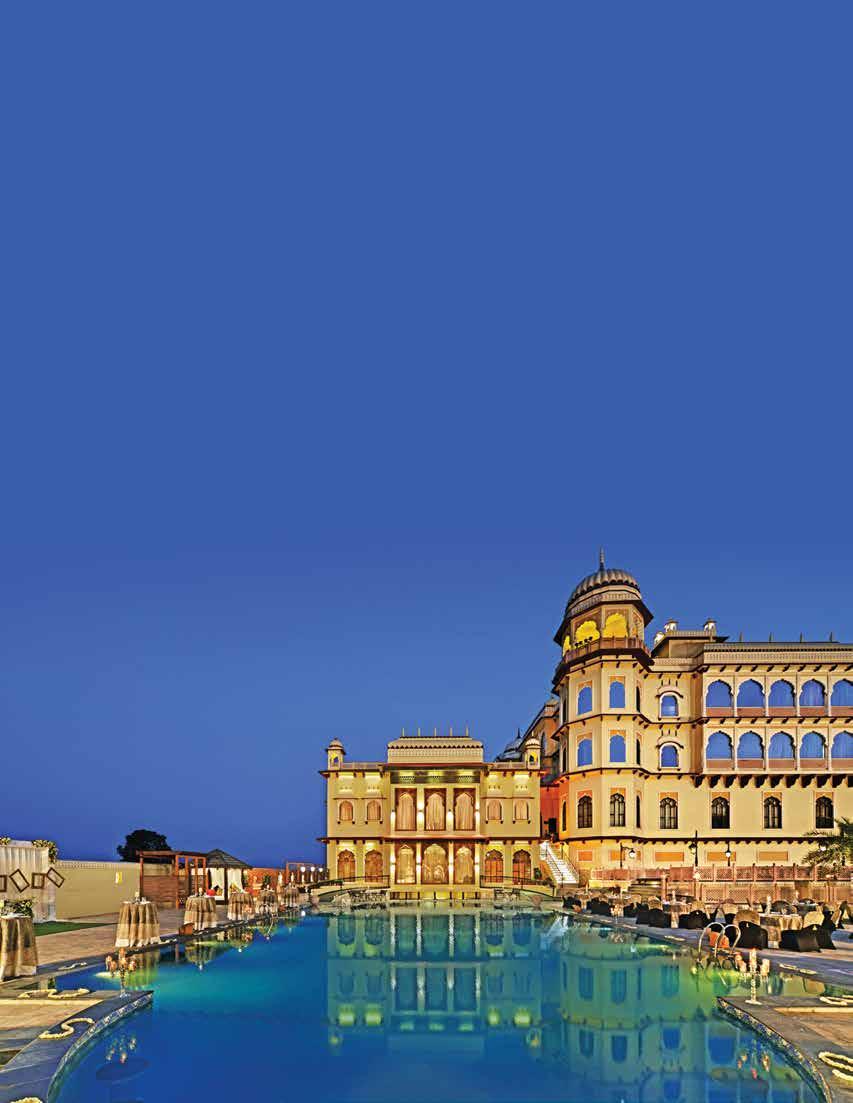
profile of the vicinity.
Façade lighting shapes the image of a townscape, attracts attention and lures in large numbers of tourists. This boosts revenues and enhances prestige. It also gives investors an economic incentive to gentrify real estate and upgrade property usage, thus making it economically more attractive. Façade lighting creates added cultural value. Professional façade lighting and design today has potentially become a landmark and a point of interest, a key component for the external appearance
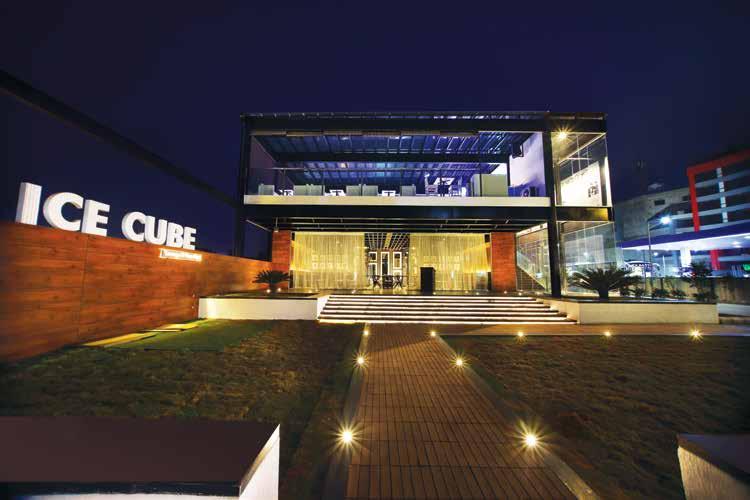
Responsive, Communicative & Adaptive Façade Lighting and dynamically responsive buildings - and are no longer static mute spectators but are active and participative. Artificial intelligence and IoT have added new dimensions to an otherwise unanimated space.
Façade design and façade lighting industry is also rapidly evolving leaps and bounds. Apart from being “simply beautiful”, it has now moved on to be responsive communicative and adaptive. From simple modules of analysing glare due to sunlight, it has moved further to assimilate climatic data, responds to changes in weather, etc.
Lighting too is communicative and creative. It not only adds magic to the building but also builds identity not only to the edifice it represents, but also creates a story line to a cityscape. From static to dynamic, from muted to being a statement, both façade and façade lighting became primary, “identity makers”. Façade also can be a communicative tool as pioneered from the famous “Times Square” of New York, where lights & façades are also informative and communicative.
In short, façades are also a great advertising tool.
The changes in the industry are rapid and I’m sure that the emerging possibilities will be mind-blowing. W e are in a busy world - a zone where days and nights are i n t e r v e n e d together through global economics and dynamic time zones. Work and recreation are no longer time-bound, extending through long nights.
Buildings and lifestyles are changing rapidly keeping in tune with globalisation in an era of intense competition and faster time-cycles for every activity.
Architecture and buildings are rapidly evolving to keep pace with change - from smarter technologies, cleaner environment to energy-efficient
Digital Technology & Media Façades
Façades are the exterior layer of an edifice that creates the first impression and connect its external and internal environment. Therefore, the appropriate lighting of the façade can enhance its beauty and relevance. Façade lighting can strike up an engaging dialogue in the urban world. It lends the
building a voice to communicate with its viewers and a personality that creates a visual experience. Some display images, while others highlight architectural accents, and some stand as a landmark with their abstract display in the city’s night skyline.
Façade lighting has turned structures into bold personalities that are no longer lost in oblivion
after dark. With façade lighting, building owners can choose to highlight entrances, pillars and specific architectural features. The interplay of light and shadow is used intelligently to prevent a monotone appearance of the external surface of a building. Preserving a building’s integrity and functionality is essential though. Hence, it is imperative
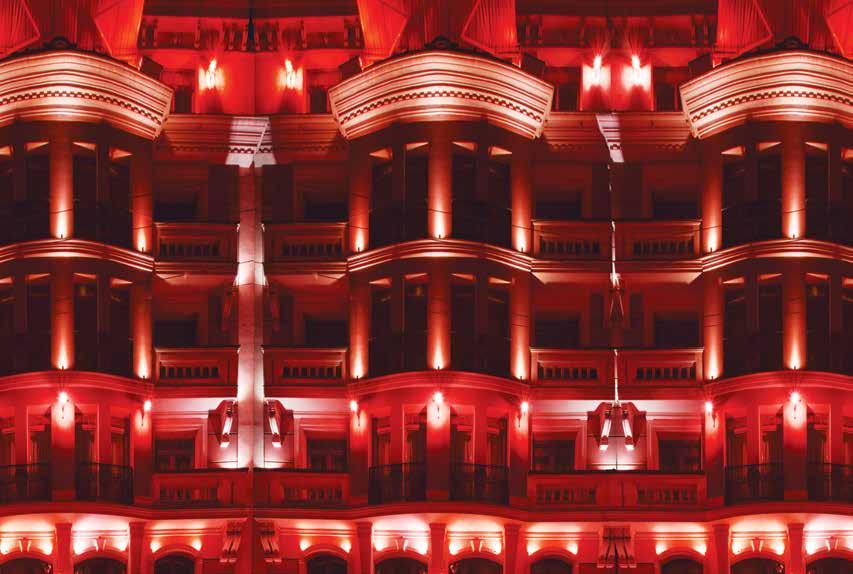
M edia Façades Buildings that Broadcast
International Youth Culture, Nanjing, Chaina
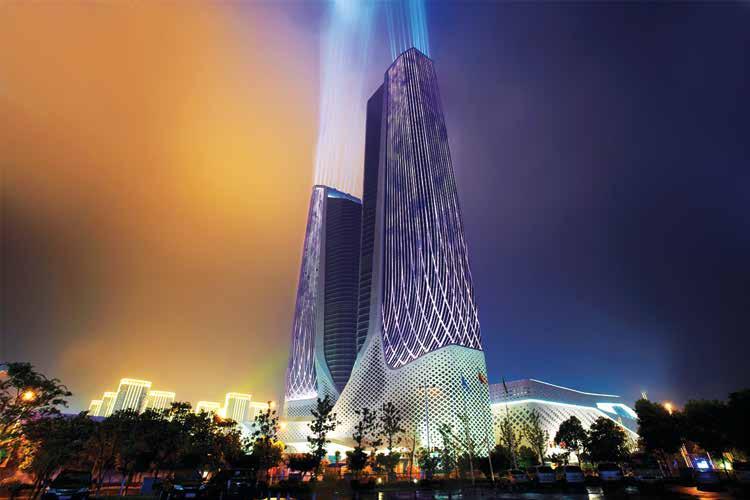
Façades have become a novel real-estate in the world of the Indian construction industry today. Modern façades have also become more expressive towards building’s character, positioning, technology and branding alike apart from the coherent skin to the structure. While commercial real estate is still picking up since demonetisation and RERA, the use of façades as an asset to the
buildings is also on the rise. This is a late revival relatively as the South Eastern countries and the western world has already explored and is improving this aspect of the marketable space. As our lifestyles are adding more hours to outdoor activities, it is imperative for city centers / urban destinations to be receptive and more welcoming and needless to say - safe and dynamic. Parallelly, we have noticed that digital technologies are rapidly finding
their way into urban spaces. Façade lighting with multiple digital content possibilities hence has become prominent going ahead. In other words, Media façades are the order of the day. Today we have permanent media façade installations worldwide that compete for attention. These façades create unique identities for these buildings as they chatter and broadcast content/ graphics/ messages/ branding/ experience to citizens.
Façade
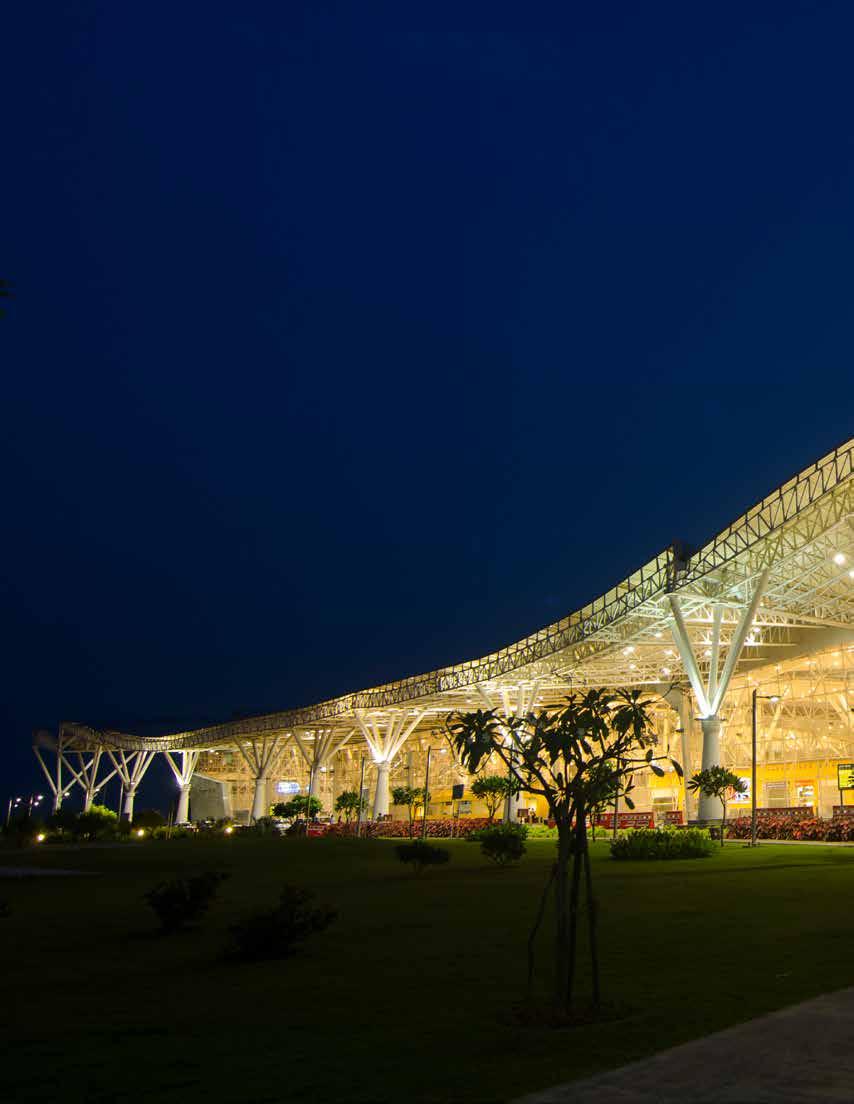
Lighting Creating Distinct Landmarks
Abuilding’s façade is an expressive feature. Perhaps the only visible design element to the non-inhabitants is the façade. Creatively illuminated building façades convey messages,
communicate emotions, create attention and facilitate orientation. Moreover, modern lighting solutions for building façades add value to the architectural or economic merit by making a location more prominent, beautiful
and safer. Achieving the status of ‘iconic and attractive nightscapes’ demands great aesthetic design sensibility. Lighting solutions also need to be sustainable, save resources and prevent unnecessary light pollution.
A building is in constant dialogue with its ecosystem, and for it to be sustainable, an efficient system of façade lighting is imperative. Saving energy is an omnipresent challenge. Façade lighting must, therefore, get to
Night view of Raipur airport, designed by Creative Group
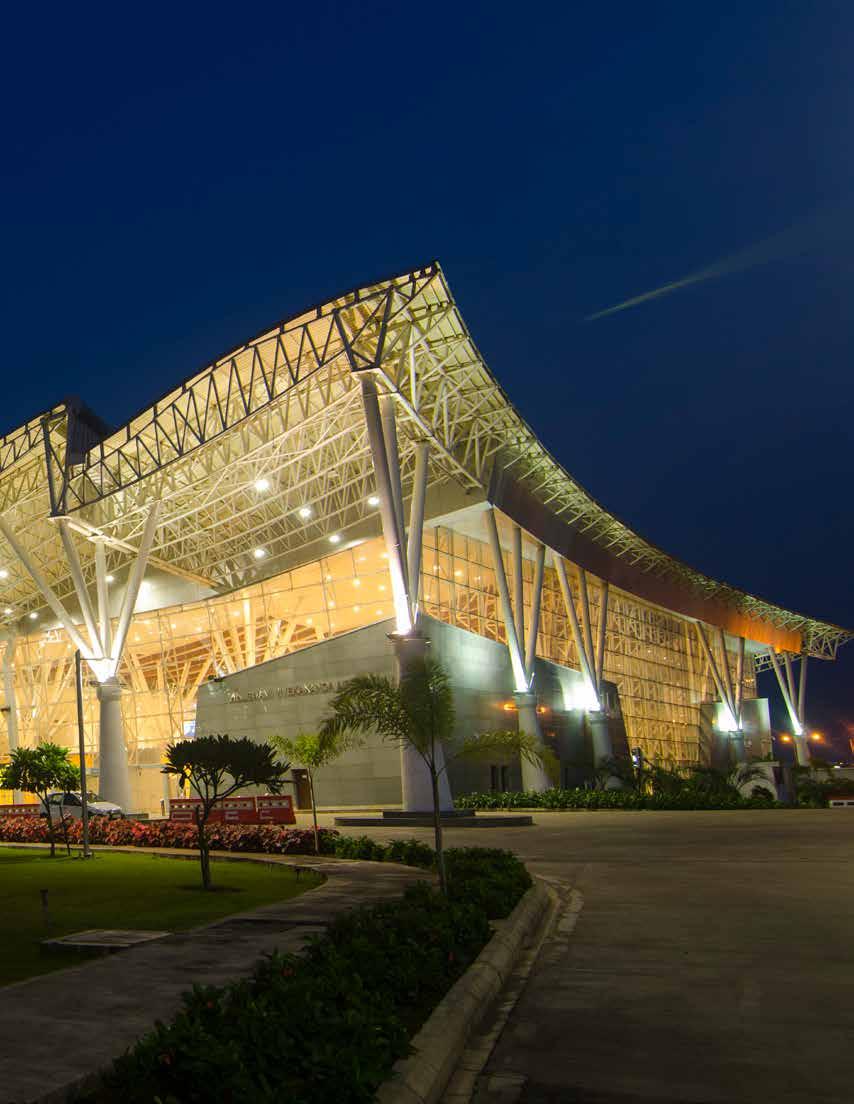
grips with ecological compatibility issues.
The number of buildings that have illuminated façades are increasing sharply. Because of architectural, societal and technological changes, lighting
design faces new challenges. The cover story discusses façade lighting – from a designer’s standpoint as well as from a lighting system manufacturers’ point of view – as an energy-efficient and iconic design solution.
ANUJ DHIR Vice-President & Business Head, Wipro Lighting
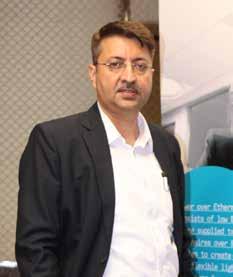
What is the importance of façade lighting? How can it compliment the exterior of a building? Professional outdoor lighting design can create dramatic effects with lighting buildings and structures at night. An ideal façade lighting solution addresses the functional requirements as well as highlights aesthetics of the surroundings, making it look surreal.
With the advent of latest technologies, lighting is much beyond mere illumination. Façade lighting is done to illuminate the building exterior, mainly to enhance the building architecture or to highlight the importance of a particular structure.
Key to good façade lighting is
the lighting effect without the light source visibility. Coloured beams and patterns bring in a strong element of grandeur in façades and structures. Façade lighting is an important aspect of outdoor lighting to enhance architectural focal points, improve safety and security, and increase property value.
Please brief on various architectural façade lighting solutions? Architectural façade lighting solutions include: • Linear wall washer & light bars: Used to highlight wall surface uniformly by mounting upwards or downwards as per the requirement • In-ground lights: Used to highlight any columns with lower height to wall-wash by mounting at the base/ground • Flexible strip lights: Used to highlight the contour of any structure • Underwater lights: For highlighting structures below water bodies
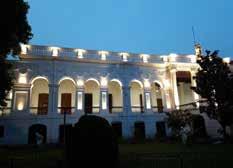
• Wall lights: Used to create patterns on a wall surface • Step lights: Used to highlight the steps of staircases • Floodlights: Used to highlight any sculpture & columns or any particular side of the building for accent/contour lighting by mounting at the base of the structures.
Please list a few checkpoints to consider for best façade lighting solutions? Proposed lighting design for façade lighting should increase the beauty of the modern building and complete heritage monument and create a signature mark without affecting the structure. Lighting can be plane or dynamic as per the design intent.
The energy-saving aspect should be taken care of as façade lighting has longer operating hours. Since it’s a type of outdoor public space lighting, higher degree of protection from the sun, wind, rain and insects needs to be considered. Theft proof installation is recommended.
Care should also be taken to make sure that the poles and accessories used for façade lighting should complement the structure and not appear sore to the viewer’s eye. The lighting materials used for façade lighting should either be concealed or placed in such a way as to not obstruct the view of the visitors in the daytime.
ANIL BHASIN President, Havells India Limited
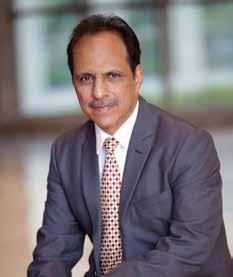
“Façade Lighting Needs In-depth Study of Site”
Please brief on various architectural façade lighting solutions. The LED has been a boon for architectural façade solutions, as we can use different form factors, product designs (with a driver inside or external driver), mounting options, colour temperature options (3000K, 4000K, 6500K,
RGB, RGBW, etc.) and diverse beam distributions.
Monuments are preferably lit-up with warm white colour (3000K), wherein modern skyscrapers with dynamically changing multicoloured lights. We have solutions for illumination from a distance, tree uplighting, wall grazing, flex strips for outlining, underwater

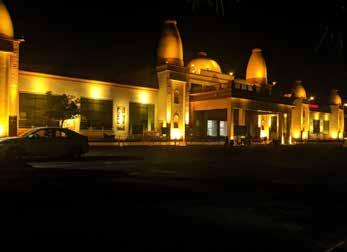
Mathura Cantt Railway Station, Mathura
Project: Mathura Cantt Railway Station
Location: Mathura
Client: Railways
Completion date: 31 st July 2019
Materials used for façcade & fenestration: RGB
lights, Ranger LED Flood Light, Compass LED Flood Light and Ground Burial Light of 16W
Extra: Syncing our action with the rRailways' mission to enhance the passenger experience at railway stations, we contributed to the beautification of external facia. Different colour themes for specific days – tricolour on 15 th August and 26 th January. Women’s Day, Cancer Day, Diwali, Eid, etc.
Achieving the Right 'U-value' Intermission is the Key Parameter for a Well-Managed Façade
Technopark, Trivandrum



Ar. N. Mahesh is one of the country’s eminent architects of 43 years in the academic and professional field. He has contributed immensely in the field of ‘sustainable architecture’. He has revived the timber construction in a modern concept and has designed some of the best resorts & hotels in India. “Amazing Timber Resorts” by N. Mahesh - the voluminous 300-page book is an authentic document portraying the genius and brilliance in him. Late Dr. A.P. J. Abdul Kalam during his term as President of India in 2002 recognised by Mahesh’s work for Rajiv Gandhi Centre for Biotechnology, Trivandrum and honoured him with a plaque for his excellence in design. Ar. Mahesh is a recipient of more than two dozen awards & honours. A trendsetter in conceptualising building designs, he is a ‘professional architect’ as well as a proven ‘academician’. It is this virtue that dominates his personality as a ‘Man of Institution’. Ar. Mahesh has also founded the College of Architecture Trivandrum (CAT), which is one of the most acclaimed schools of architecture in the country today. In a conversation with WFM, Ar. Mahesh talks about his practice, inspirations, design approach and his milestone projects.
NIKHIL ARORA Director, Virgo Group of Companies

"We Churn Out the Products That Could Withstand Stringiest of Quality Measures”
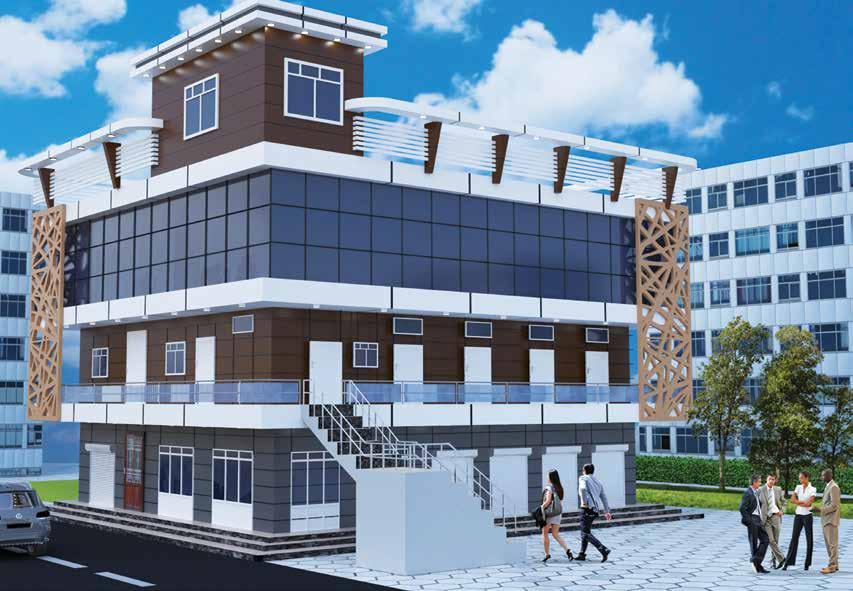
Nikhil Arora, Director, Virgo Group is a hands-on marketing leader and a technology adopter, helming the Virgo group and driving its aggressive growth targets. He gets it done by leading multi-faceted teams across the organisation and establishing strong collaborations with multiple stakeholders. A result-oriented motivational leader, he inspires his teams to embrace the company’s vision and operate at peak performance, driving meaningful actions that produce measurable outcomes.
The Virgo Group of Companies is one of the largest multinational manufacturer, marketer and distributor of aluminium rolled products, ACPs, laminates and plywood, with more than a million square feet of manufacturing space and over 3000+ employees - delivering tons of units to market every week.
Nikhil Arora explains his company’s business, production facilities, products, policies and the market for the exterior cladding products like aluminium sheets, ACPs, laminates and plywood in India and worldwide. Here are the excerpts from the interesting interview.
New Technologies & Products in Fenestration Exploring the Finest
Zak World of Windows | August 2 nd , 2019 | Novotel, Visakhapatnam
Addressing the performance and functional aspect of architecture and after successfully completing 15 editions in various cities of India, Zak World of Windows was held in Visakhapatnam, at the Novotel on 2 nd August 2019. The event was a great success which saw a turnout of more than 200 people in attendance.
The ‘Jewel of East Coast’, Vishakapatnam, is now being developed as a ‘Smart City’ by the Government of India under the 100 Smart Cities project. The aim of the Mission Smart City is to efficiently utilise the available assets, resources and infrastructure to enhance the quality of urban life.

With Viashakapatnam’s heritage of art, architects have long sought to communicate their craft through their buildings. Being one of the fastest-growing cities in the country, modern pace and development have completely changed the face of this city and has made it an epitome of a new emerging India - restless and energised. As a result of the upcoming boom, with development being the fastest-growing, there’s a lot to learn and experience in Andhra’s most dazzling city, Vizag. In this quest, the event featured some of the most important and dynamic architects from Vishakapatnam who, in their prime, are working their way one-building-at-a-time, to make our ‘space for living’ more exciting.
AZAAN AHMED Director, Zak Group giving the welcome address
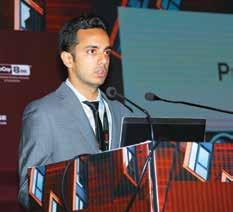
The forum aimed at the proper understanding of fenestration and addressed the issues like design and application challenges, measuring the performance of

